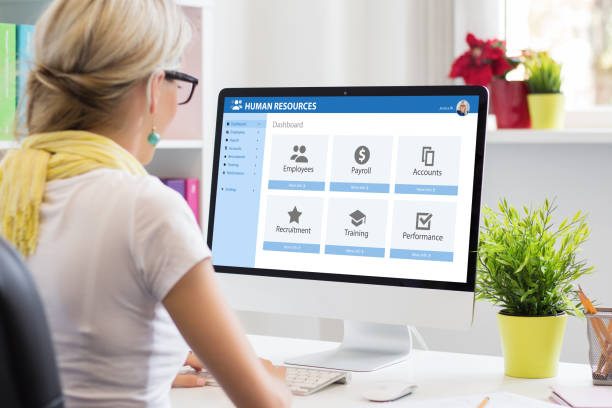Understanding Payroll Software: The Backbone of Payroll Management

At its core, payroll software automates the process of calculating employee salaries, deductions, taxes, and other payroll-related tasks. These software solutions come equipped with a myriad of features designed to streamline payroll processes, ensure compliance with tax regulations, and enhance data accuracy. From small businesses to large enterprises, payroll software caters to the diverse needs of organizations, offering scalability, flexibility, and customization options to suit specific requirements.
Payroll software solutions offer a comprehensive suite of features to address the complex requirements of payroll management:
Employee Data Management: Payroll software allows businesses to securely store and manage employee information, including personal details, salary history, tax withholdings, and benefit contributions.
Automated Payroll Calculations: These software solutions automate the process of calculating employee wages, taxes, deductions, and benefits, eliminating manual errors and ensuring accuracy.
Tax Compliance: Payroll software keeps businesses compliant with federal, state, and local tax regulations by automatically calculating and withholding the correct amount of taxes from employee paychecks.
Direct Deposit and Payment Processing: Payroll software enables businesses to process employee payments via direct deposit, paper checks, or electronic payment methods, providing convenience and flexibility for both employers and employees.
Reporting and Analytics: These software solutions generate a variety of reports, including payroll summaries, tax reports, and employee earnings statements, to help businesses track payroll expenses, analyze trends, and make informed decisions.
Integration with Accounting Systems: Payroll software seamlessly integrates with accounting software systems, such as QuickBooks and Xero, to synchronize payroll data with general ledger accounts, streamline financial reporting, and improve accuracy.
Employee Self-Service Portals: Many payroll software solutions offer self-service portals for employees to view their pay stubs, update personal information, and access tax forms, reducing administrative burden on HR staff.
Benefits of Payroll Software: Driving Efficiency and Compliance
Implementing payroll software offers numerous benefits for businesses:
Time Savings: By automating repetitive payroll tasks, payroll software saves time for HR staff, allowing them to focus on more strategic initiatives and employee-related activities.
Accuracy and Compliance: Payroll software reduces the risk of errors and ensures compliance with tax laws and regulations, minimizing the potential for costly penalties and fines.
Cost Efficiency: Payroll software helps businesses save money by reducing administrative overhead, eliminating the need for paper-based processes, and optimizing payroll-related expenses.
Data Security: Payroll software provides robust security features, such as data encryption, access controls, and regular backups, to protect sensitive employee information from unauthorized access or breaches.
Improved Employee Satisfaction: With self-service portals and timely, accurate paychecks, payroll software enhances the employee experience, fostering trust, loyalty, and satisfaction among staff members.
Considerations When Choosing Payroll Software
When selecting payroll software, businesses should consider several factors:
Scalability: Choose a payroll software solution that can scale with your business as it grows, accommodating increasing numbers of employees, complex payroll structures, and changing regulatory requirements.
Ease of Use: Look for payroll software with an intuitive user interface and easy-to-navigate features to minimize training time and ensure adoption among staff members.
Integration Capabilities: Ensure that the payroll software integrates seamlessly with other business systems, such as accounting, human resources, and timekeeping software, to streamline data exchange and improve workflow efficiency.
Customer Support: Select a payroll software vendor that offers responsive customer support, including phone, email, and live chat assistance, to address any technical issues or questions that may arise.
Cost: Consider the total cost of ownership, including software licensing fees, implementation costs, and ongoing support and maintenance fees, to determine the affordability and value of the payroll software solution.
Best Practices for Implementing Payroll Software
To ensure a smooth transition to payroll software, businesses should follow these best practices:
Assess Current Processes: Conduct a thorough review of existing payroll processes, workflows, and pain points to identify areas for improvement and determine the specific requirements for the new payroll software solution.
Select the Right Software: Research and evaluate multiple payroll software options to find the one that best aligns with your business needs, budget, and long-term goals.
Plan for Implementation: Develop a detailed implementation plan that outlines key milestones, roles and responsibilities, training requirements, and timelines for deploying the new payroll software.
Train Staff Members: Provide comprehensive training and support to HR staff and other users to ensure they are familiar with the features and functionalities of the new payroll software and can use it effectively.
Monitor and Evaluate Performance: Continuously monitor the performance of the payroll software, gather feedback from users, and make adjustments as needed to optimize efficiency and effectiveness.
Conclusion
In conclusion, payroll software revolutionizes the way businesses manage payroll processes, offering automation, accuracy, compliance, and efficiency. By streamlining payroll calculations, ensuring tax compliance, and enhancing data security, payroll software helps businesses save time, reduce costs, and improve the overall employee experience. With careful consideration of key factors such as scalability, ease of use, integration capabilities, and cost, businesses can select the right payroll software solution to meet their unique needs and drive success in payroll management. As technology continues to evolve and businesses seek innovative solutions to streamline operations, payroll software will remain a cornerstone of modern HR management, empowering businesses to thrive in a competitive landscape.
